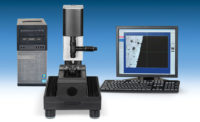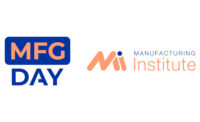NEW YORK CITY-The second largest mega deal in 10 years, priced at $11.4 billion, was the leading driver of merger and acquisition (M&A) value for the industrial manufacturing sector in the second quarter of 2012, according to Assembling value, a quarterly analysis of M&A activity in the global industrial manufacturing industry by PwC US. However, overall deal volume declined 60% sequentially to a two-year low, as management teams wait for clarity on multiple issues impacting the global economy.
Total deal value increased to $17.6 billion in the second quarter of 2012 from $15.7 billion in the first quarter of 2012, primarily due to the announcement of an $11.4 billion mega deal (transactions worth more than $1 billion), which alone accounted for 65% of total deal value for the quarter. This deal also drove a 50% increase in average deal value to $600 million, compared to the first quarter, the highest average deal value since the recession ended in June 2009. The underlying M&A environment slowed with 28 deals worth more than $50 million recorded during the second quarter, a 26% decrease from 38 deals in the previous quarter.
“Our report shows that the M&A environment for industrial manufacturing companies remained sluggish in the second quarter of 2012, as investors remained on the sidelines given concerns over major economic issues,” says Bobby Bono, U.S. industrial manufacturing leader for PwC. “Despite the softness in activity, cash-rich balance sheets and the emergence of niche market opportunities support cautious optimism for deal activity longer-term. In addition, shareholders may increasingly be pressuring companies to capitalize on their cash positions to secure growth through strategic transactions. These trends align with the findings from our recentManufacturing Barometer , which revealed that U.S. industrial manufacturers remained optimistic regarding prospects for the U.S. economy, but sentiment about the global outlook continued to weaken.”
Strategic investors continued to drive deal activity in the second quarter of 2012 with 86% being active in deals worth more than $50 million, recording the highest involvement compared to all of 2011. Financial investors largely remained on the sidelines in anticipation of more clarity on the direction and growth prospects of the industrial manufacturing sector.
“We found that shareholder pressures to deploy liquid assets or return them to investors, along with fairly moderate organic growth prospects around the globe, may provide a favorable M&A environment for strategic investors,” says Bono. “We also continue to see divestitures as an effective path for companies seeking to right-size their operations, exit unprofitable businesses, and reduce exposure to recessionary areas such as Europe.”
Continuing the trend from 2011, U.S. acquirers led deal activity in the second quarter of 2012, primarily pursuing select targets in European markets with low sovereign risk. U.S. investors are focused on entering attractive niche markets and acquiring new technologies. Acquisition strategies during the second quarter were aimed at aligning product mixes with the growing global demand for energy and energy efficiency.
Europe, a region that typically generates some of the largest deals, remained mostly passive during the second quarter as acquirers faced significant economic uncertainty. Deal activity in the BRIC (Brazil, Russia, India and China) region also remained subdued, recording only one transaction worth more than $50 million in the second quarter of 2012. A slowdown in the manufacturing sectors of China and Brazil may have introduced concerns over emerging markets' ability to drive near-term growth in the global economy.
“Our report shows that the European sovereign crisis has been negatively impacting Chinese exports, potentially putting a toll on deal activity,” comments PwC’s Bono. “However, China has shown a willingness to put measures in place to stimulate its local economy as the government has increasingly focused on shifting the composition of its economy toward domestic consumption and away from a reliance on exports and growth from the Western world. If these efforts gain traction, China can potentially boost global economic growth and spur M&A activity as Europe deals with its issues.”
India's manufacturing, on the other hand, has shown some resilience to the effects of the European crisis and offers a glimmer of hope for the region. Despite lacking significant deal activity in the second quarter of 2012, many remain cautiously optimistic for the industrial manufacturing sector in this country. “Indian factories have stepped up production and hired workers at the fastest rate in more than two years. If India is able to sustain such numbers, investors may consider growth opportunities in key sectors, possibly generating M&A activity,” said Bono.
The industrial machinery sub-sector reclaimed its leading position in industrial manufacturing M&A activity in the first half of 2012, contributing to 36% of total deals worth more than $50 million. However, a recent trend shows that this sub-sector is giving way to larger transactions in smaller sub-sectors such as fabricated metals and electronic and electrical equipment. In the first half of 2012, the electronic and electrical equipment sub-sector drove 51% of total deal value for deals worth more than $50 million, the highest percentage in more than 10 years.
For a copy of Assembling value, PwC’s quarterly analysis of M&A activity in the global industrial manufacturing sector, please visit:www.pwc.com/us/industrialproducts .
Get our new eMagazine delivered to your inbox every month.
Stay in the know with Quality’s comprehensive coverage of the manufacturing and metrology industries.
SIGN UP TODAY!Copyright ©2024. All Rights Reserved BNP Media.
Design, CMS, Hosting & Web Development :: ePublishing


